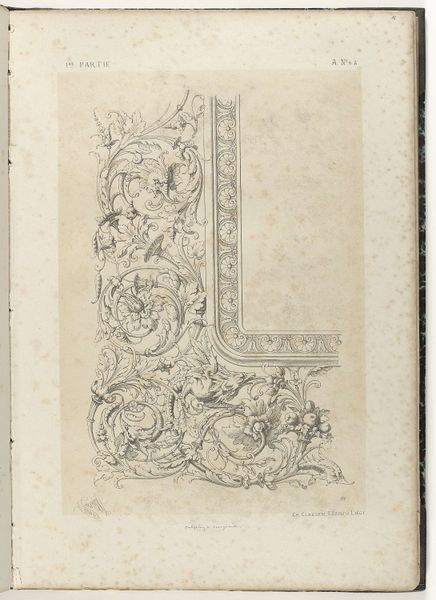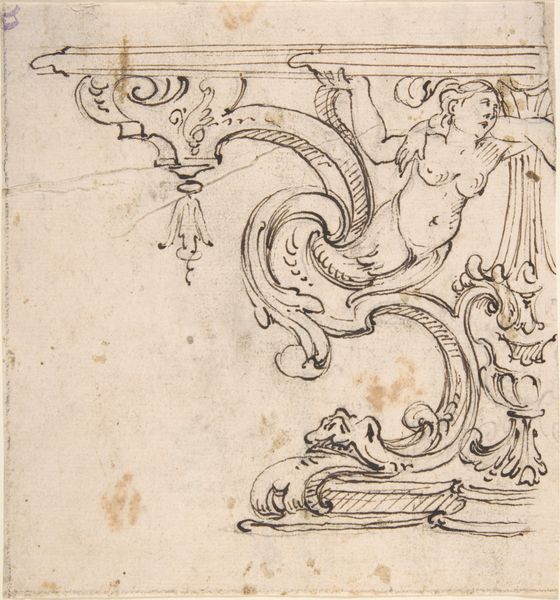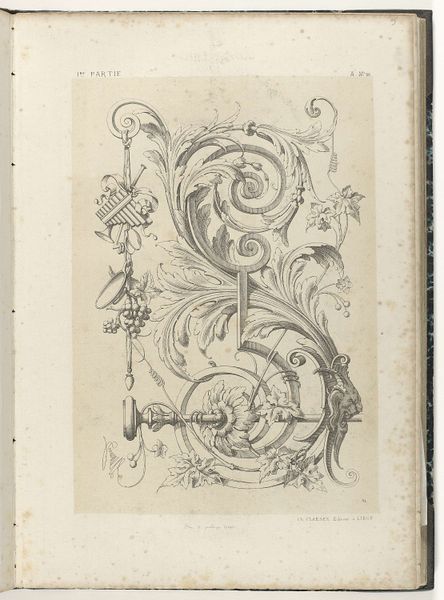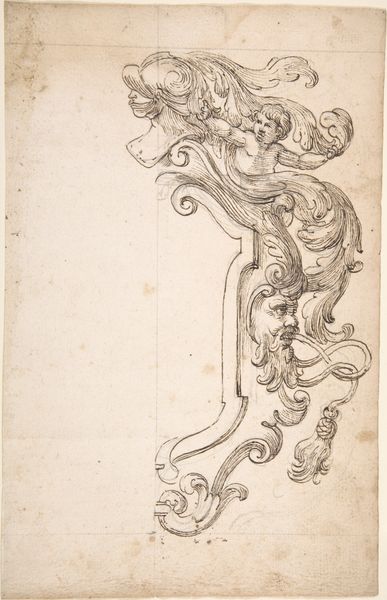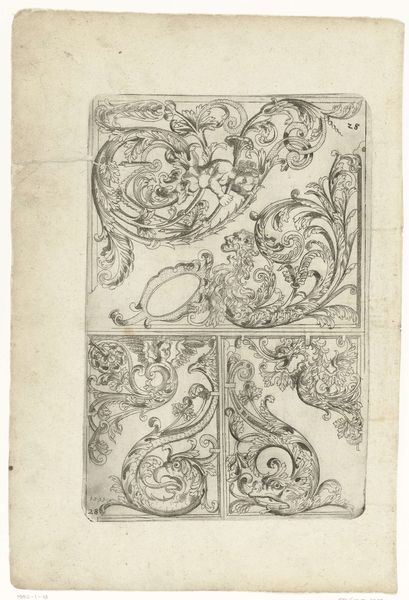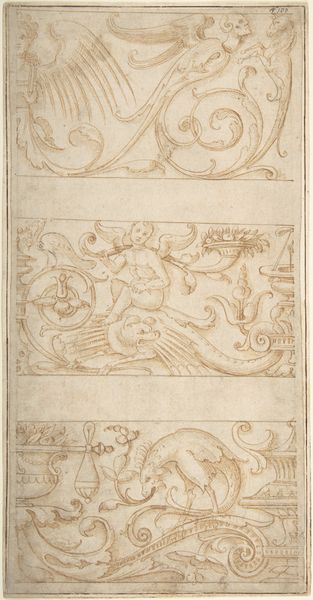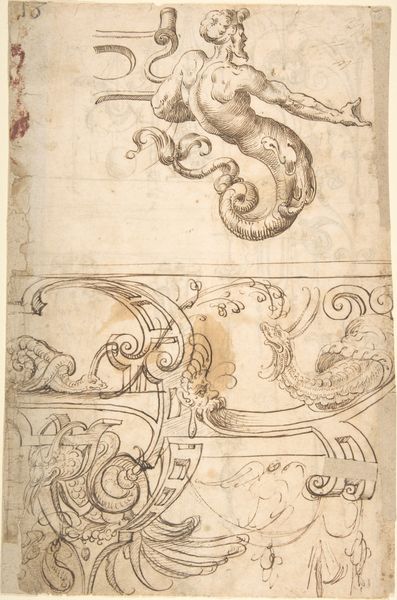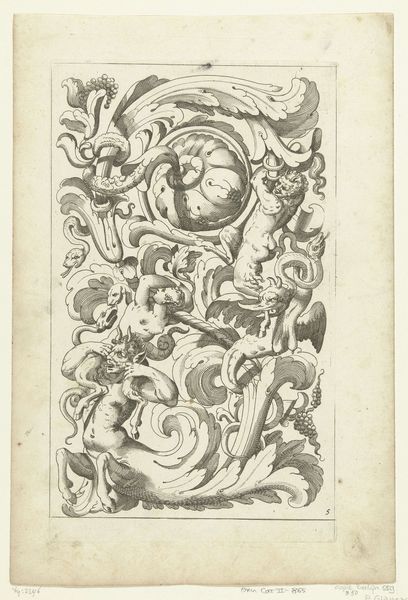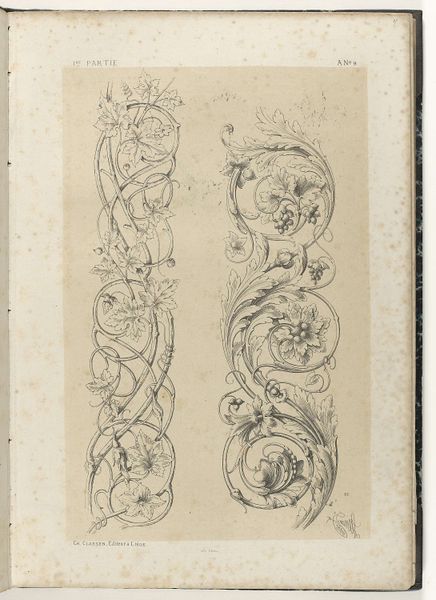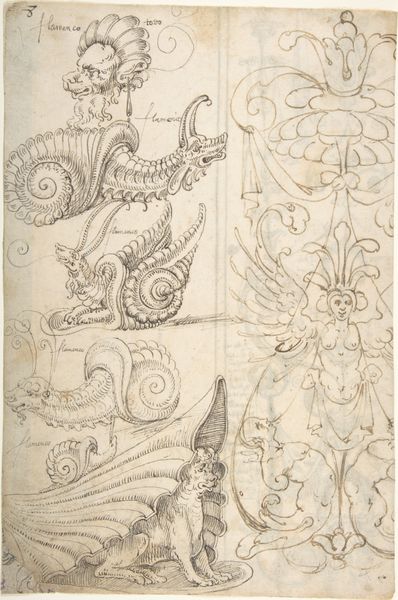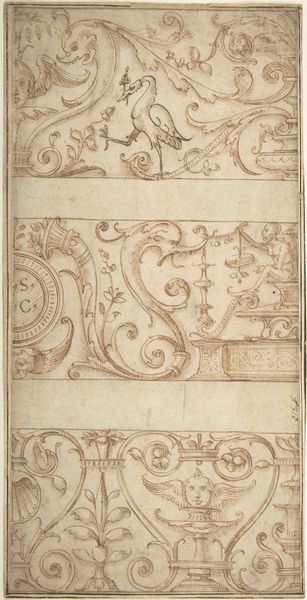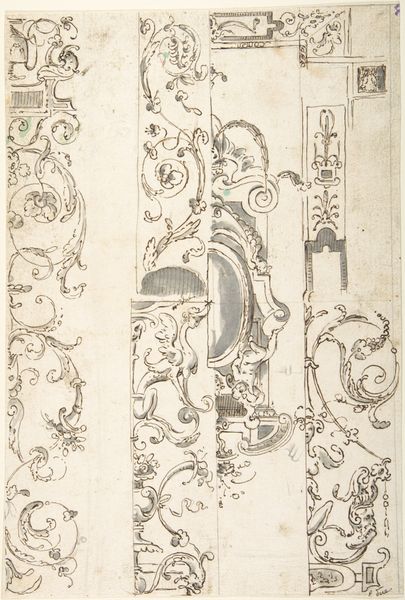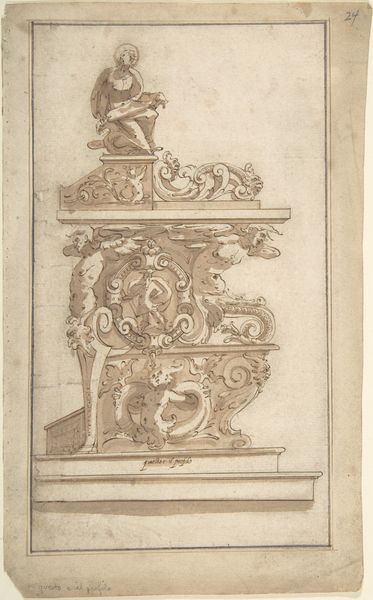
Border for Engraved Portrait by Houbraken: Daniel Finch, Earl of Nottingham
0:00
0:00
Dimensions: support: 143 x 101 mm
Copyright: CC-BY-NC-ND 4.0 DEED, Photo: Tate
Curator: This ink and wash drawing, housed here at the Tate, is titled "Border for Engraved Portrait by Houbraken: Daniel Finch, Earl of Nottingham" by Hubert François Gravelot. Editor: It feels like a fragment of a dream; the cherubic figure emerging from swirling clouds contrasts so sharply with the rigid architecture. Curator: Gravelot, born in 1699, was very interested in the ways visual motifs signal power, and the Earl’s portrait would likely have been surrounded by these symbols. The border becomes a declaration of identity. Editor: Absolutely. The cherub, that common symbol of innocence and divine favor, juxtaposed with the stern columns, emphasizes the Earl’s supposed virtues and societal standing. But who benefits from that kind of visual messaging? Curator: Well, portrait borders always solidify an image. The cherub acts as a sort of eternal witness. Editor: I see it more as a form of sanctioned propaganda, one that reinforces hierarchies. It reminds me that images always have a very specific cultural and political purpose. Curator: Perhaps. But it’s also an interesting study of how such symbolic devices endure in the collective imagination. Editor: Agreed. It makes you wonder about the unseen narratives and the power structures they support.
